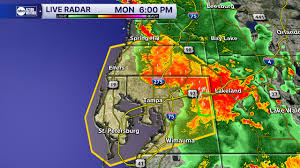Understanding Severe Thunderstorm Warnings in Canada

Introduction
Severe thunderstorms are a significant weather phenomenon that can lead to dangerous conditions such as heavy rain, hail, strong winds, and even tornadoes. As climate change continues to intensify weather patterns, understanding severe thunderstorm warnings is more important than ever for Canadian residents. These warnings not only inform citizens of imminent threats but also help to prepare communities for potential damage and ensure public safety.
What Is a Severe Thunderstorm Warning?
A severe thunderstorm warning is issued by meteorological authorities when a storm is producing or is expected to produce severe weather conditions. Such conditions typically include winds exceeding 90 km/h (56 mph), hailstones larger than 2 cm (0.79 inches) in diameter, or heavy rainfall that can lead to flash floods. In Canada, Environment and Climate Change Canada (ECCC) is responsible for issuing these warnings, providing residents with timely and vital information.
Recent Severe Thunderstorm Events in Canada
This summer, a series of severe thunderstorms swept across various regions of Canada, leading to widespread damage and disruptions. In late July 2023, Ontario experienced its most significant outbreak, with winds reaching up to 120 km/h and hail that caused damage to vehicles and property. The ECCC issued multiple warnings, helping residents take precautionary measures and seek shelter. Additionally, Manitoba faced severe thunderstorms in early August, resulting in localized flooding and power outages. Emergency services were mobilized to assist affected areas, emphasizing the importance of adhering to severe thunderstorm warnings.
Safety Precautions During Severe Thunderstorms
When a severe thunderstorm warning is issued, it is crucial to take immediate action to ensure safety. Here are some recommended precautions:
- Stay indoors and away from windows.
- Listen to local news and weather updates for the latest information.
- Avoid driving or walking outside during the storm.
- Prepare an emergency kit with necessary supplies and medications.
- Have a safety plan in place for your family, including where to take shelter.
Conclusion
Understanding severe thunderstorm warnings and their implications is essential for the safety and preparedness of communities across Canada. With changing weather patterns, the frequency and intensity of severe thunderstorms may increase, making it vital for residents to remain vigilant during storm season. By taking severe thunderstorm warnings seriously and implementing safety measures, Canadians can protect themselves and their loved ones from the potentially devastating impacts of severe weather.









